#Power BI analytics for businesses
Explore tagged Tumblr posts
Text
Streamline Your Workflow with Microsoft 365 Suite Deployment Services in 2025
In today’s fast-paced business environment, achieving efficiency and seamless collaboration is critical to staying ahead. The Microsoft 365 Suite offers a comprehensive range of tools designed to streamline workflows, enhance productivity, and foster better communication. However, to unlock its full potential, businesses need tailored deployment services that align with their specific goals and operational requirements.

Why Microsoft 365 Suite is Essential in 2025
Unified Communication and Collaboration Microsoft Teams, SharePoint, and Outlook provide integrated platforms that support real-time communication, file sharing, and collaboration across teams—whether they’re in the same office or dispersed globally.
Enhanced Productivity with AI and Automation Tools like Microsoft Viva and Power Automate bring AI-driven insights and automation capabilities, enabling businesses to reduce manual tasks and focus on strategic initiatives.
Scalable and Secure Solutions With advanced security features and compliance tools, Microsoft 365 ensures businesses can scale their operations confidently while safeguarding sensitive data.
Flexibility for Hybrid Work Models The suite’s cloud-based architecture empowers employees to work from anywhere, ensuring a seamless transition between remote and on-site operations.
The Importance of Professional Deployment Services
While Microsoft 365 offers robust features, implementing it effectively can be challenging without expert guidance. Professional deployment services are crucial for:
Customised Solutions: Tailoring the suite’s features to your business’s unique needs ensures maximum ROI.
Efficient Migration: Migrating data from legacy systems with minimal disruption requires technical expertise.
Training and Support: Ensuring your teams are equipped to leverage the suite effectively enhances adoption rates.
Ongoing Optimisation: Regular assessments and updates keep your systems aligned with evolving business objectives.
Addressing Modern Business Challenges
Reducing Silos By integrating tools like Teams, OneDrive, and Planner, organisations can eliminate data silos and promote cross-departmental collaboration.
Improving Decision-Making Power BI within Microsoft 365 provides actionable insights through real-time analytics, enabling leaders to make informed decisions swiftly.
Boosting Employee Engagement Features like Viva Insights prioritise employee well-being and productivity, helping organisations retain top talent.
Key Considerations for Microsoft 365 Deployment
Assess Your Business Needs: Understand your current challenges and how Microsoft 365 can address them.
Plan for Change Management: Foster a culture of adaptability to ensure smooth adoption.
Focus on Security: Leverage tools like Microsoft Defender to mitigate cybersecurity risks.
Partner with Experts: Collaborate with experienced providers to ensure a seamless deployment process.
Conclusion
Microsoft 365 Suite is not just a productivity tool; it’s a strategic asset for driving innovation and efficiency in 2025. By partnering with a trusted deployment service provider, businesses can ensure a smooth transition, empowering their teams to achieve more while staying agile in a competitive landscape.
Ready to revolutionise your workflow? Explore how Microsoft 365 Suite deployment can transform your business today.
#Microsoft 365 Suite deployment#Microsoft 365 migration services#Cloud-based collaboration tools#Hybrid work solutions#Microsoft Teams integration#Secure data management#AI-driven business tools#Customised Microsoft 365 implementation#Enhanced business collaboration#Power BI analytics for businesses#Microsoft 365 professional deployment#Data security in Microsoft 365#Employee engagement with Microsoft Viva
0 notes
Text
#artificial intelligence#business#data analytics#datascience#power bi#sql#it services#information technology
4 notes
·
View notes
Text
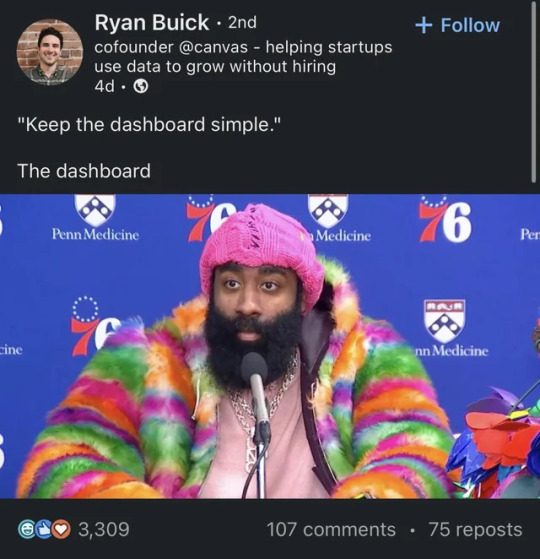
#Finance#Business#Work Meme#Work Humor#Excel#Hilarious#funny meme#funny#accounting#office humor#consulting#big data#data analysis#data visualization#data analytics#data#dashboard commentary#tableau#power bi
13 notes
·
View notes
Text
Full Stack Developer vs. Front End Developer vs. Back End Developer
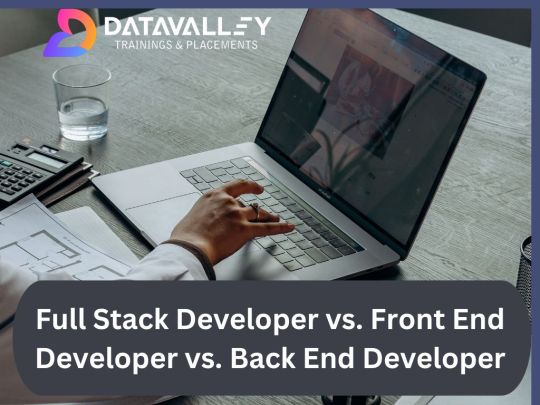
The role of a web developer is always included in the lists of high-paying IT jobs. This is because web developers are essential in today’s digital world. They create amazing websites, high-performing e-commerce sites, and other web-based applications. If you want to be a web developer, you must understand that full-stack developer skills are in great demand. However, do you understand the differences between full-stack, front-end, and back-end web development? In this post, we’ll see the differences between these three job roles, skills, and salaries.
What is Web Development?
The process of developing a website on the internet is known as web development. The non-design components of a website, such as building features and functioning with programming, markup, and scripting languages, are referred to as web development. Developers focus on technical aspects of website development such as architecture, programming, and application integration, as well as visuals.
A web developer is someone who does the following:
Creates and maintains webpages and other web-based applications.
Creates a website from a web design.
They collaborate with clients, stakeholders, and designers to understand the concept.
Can focus on frontend or backend development. Even as a full-stack developer, if necessary.
Types of Web Development
Front End Development: This aspect of web development focuses on what the user interacts with directly, i.e., the user interface of a website or web application. Front-end development deals with the design, layout, and interactivity of a site, ensuring that it’s visually appealing and user-friendly.
Back End Development: The back end is the part of a website or application that operates behind the scenes. It manages data, user authentication, and the server-side logic, ensuring the smooth functioning of the website.
Now, let’s delve into each of these roles in detail.
What is front-end development?
Front-end development, often referred to as client-side development, is the process of creating the visual elements of a website or web application that users interact with directly. It involves writing code for the user interface, optimizing website performance, and ensuring the site looks and functions correctly on various devices and browsers.
Who is a front-end developer?
A front-end developer, also known as a client-side developer, is responsible for turning web designs into a functioning website or application. They work closely with web designers and back-end developers to create an engaging and responsive user experience.
What are the front-end developer’s skills?
Front-end developers should be proficient in the following skills:
Mastery of HTML (Hypertext Markup Language) and CSS (Cascading Style Sheets) is fundamental for structuring and styling web pages.
Proficiency in JavaScript is crucial for adding interactivity and dynamic features to a website.
Knowledge of front-end frameworks like React, Angular, or Vue.js, which simplify and expedite development.
The ability to create websites that look and function well on various devices and screen sizes.
Ensuring that the website performs consistently across different browsers.
Familiarity with version control systems like Git for code management and collaboration.
Front End Developer Salary
The salary of a front-end developer can vary based on factors such as experience, location, and the company. On average, junior front-end developers can earn between $50,000 and $70,000 annually, while senior front-end developers can command salaries ranging from $90,000 to $120,000 or more.
What is Back End Development?
Back-end development, often referred to as server-side development, focuses on the server and database sides of a website or web application. It involves building and maintaining the server, databases, and applications that enable the front end to function correctly.
Who is a Back End Developer?
A back-end developer is responsible for managing the server, databases, and server-side logic of a website or application. They ensure that data is stored securely, accessed efficiently, and transmitted effectively between the front end and back end.
What are Back End Developer Skills?
Back-end developers should have expertise in the following areas:
Server-Side Programming Languages: Proficiency in languages such as Python, Ruby, Node.js, PHP, or Java is used to build server-side applications.
Databases: Knowledge of database management systems like MySQL, PostgreSQL, MongoDB, and NoSQL databases.
APIs: The ability to create and manage APIs (Application Programming Interfaces) for communication between the front end and back end.
Server Management: Skills in managing web servers and server infrastructure.
Security: Understanding web security practices and techniques to protect user data.
Version Control/Git: Proficiency in version control systems to manage and collaborate on code.
Back End Developer Salary
Back-end developer salaries can also vary based on experience, location, and the organization. Junior back-end developers can earn an annual salary ranging from $60,000 to $90,000, while senior back-end developers can expect salaries ranging from $100,000 to $150,000 or more.
Frontend vs. Backend Development
Front-end and back-end development are two halves of a whole, and they must work together seamlessly to create a functional website or application. While front-end developers focus on user interface and design, back-end developers deal with the underlying server infrastructure and data management. Both roles are essential for a successful web project.
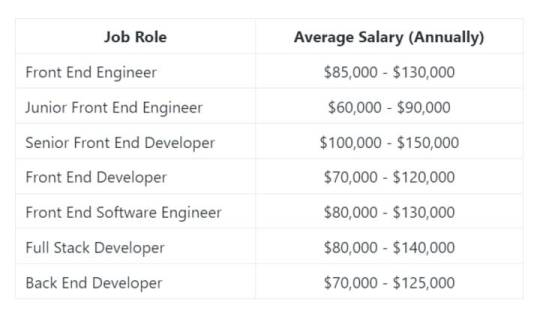
What is a Full Stack Developer?
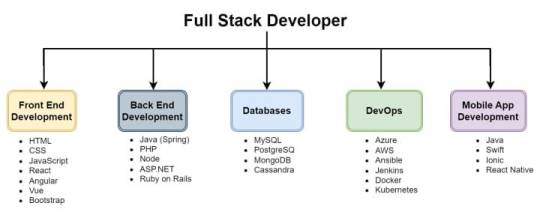
Who is a Full Stack Developer?
A full stack developer is a well-rounded professional who can take care of every aspect of web development, from designing the user interface to managing databases and server-side logic. They bridge the gap between front end and back-end development, ensuring that the entire application functions cohesively.
What are the Full Stack Developer Skills?
Full stack developers need a broad range of skills, including:
HTML/CSS: Proficiency in front end technologies for web page structuring and styling.
JavaScript: Mastery of JavaScript for creating dynamic and interactive web elements.
Front End Frameworks: Knowledge of front-end frameworks for efficient development.
Server-Side Programming Languages: Expertise in languages like Node.js, Python, Ruby, or Java for server-side development.
Databases: Proficiency in database management systems for data storage and retrieval.
APIs: Ability to create and manage APIs for communication between the front end and back end.
Version Control/Git: Familiarity with version control systems for code management.
Problem-Solving: Strong analytical and problem-solving skills to troubleshoot and optimize web applications.
Full Stack Developer Salary
Full-stack web developers are in high demand due to their range of skills and extensive knowledge. An average full stack developer’s annual salary might range from $110,000 to $150,000, based on their skill set and expertise.
Full-stack engineers earn more money than front end or back end developers. Employers agree to pay more for a full stack developer since it makes more business sense to hire one person with front and back end expertise rather than two.
As a result, the profession of a full stack developer is a profitable alternative for aspirants looking to create a career in the digital business.
The choice between becoming a full stack developer, front end developer, or back end developer depends on your interests, strengths, and career goals. Front end developers excel at creating visually appealing and user-friendly interfaces; back end developers focus on the server-side and data management; and full stack developers possess a comprehensive skill set that allows them to manage the entire development process. Each role is integral to the web development ecosystem, and the right one for you depends on your passions and aspirations within the field.
If you’re considering the path of a full stack developer and are eager to acquire the comprehensive skill set required to excel in this role, we have an excellent suggestion for you. Consider enrolling in the Full Stack Developer course at Datavalley.
Datavalley has a stellar track record of empowering aspiring developers with the knowledge and expertise to succeed in the dynamic world of web development. Their course covers everything from the fundamentals of HTML and CSS to in-depth training in JavaScript, front end and back end frameworks, and much more.
By joining Datavalley’s Full Stack Developer course, you’ll gain hands-on experience, build an impressive portfolio, and be well-prepared for a rewarding career in web development.
Don’t miss out on this opportunity to kickstart your journey as a Full Stack Developer with Datavalley. Your future in web development awaits. Take the first step today!
Attend Free Bootcamp at Datavalley
If you’re looking to supercharge your Java development skills and become a full-stack Java developer, consider joining the Java Full Stack Developer bootcamp at Datavalley. It’s an excellent opportunity to enhance your expertise and take your career to the next level.
Key points about Bootcamps:
It is completely free, and there is no obligation to complete the entire course.
20 hours total, two hours daily for two weeks.
Gain hands-on experience with tools and projects.
Explore and decide if the field or career is right for you.
Complete a mini project.
Earn a certificate to show on your profile.
No commitment is required after bootcamp.
Take another bootcamp if you are unsure about your track.
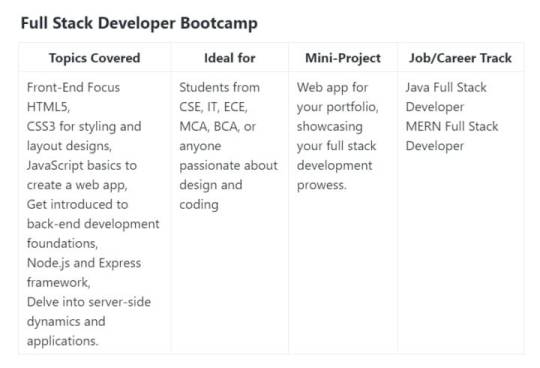
#datavalley#dataexperts#data engineering#data analytics#dataexcellence#business intelligence#data science#power bi#data analytics course#data science course#full stack course#full stack training#full stack web development#full stack developer#full stack software developer#front end developers#back end development
7 notes
·
View notes
Text
Inteligencia Artificial: El Motor de la Nueva Era del Análisis de Datos
Introducción: De Datos Crudos a Decisiones Inteligentes Gracias a la IA Vivimos en una era de información sin precedentes. Las organizaciones generan y recopilan volúmenes masivos de datos cada segundo. Sin embargo, estos datos son solo potencial en bruto. El verdadero valor reside en la capacidad de analizarlos para extraer conocimientos, identificar patrones, predecir tendencias y, en última…
#Alteryx#An��lisis de Datos#Analítica Aumentada#Analítica Predictiva#AutoML#Azure ML#BI#Big Data#Business Intelligence#Ciencia de Datos#Data Mining#Domo#Google#IA#IBM#IBM Watson#inteligencia artificial#Looker#machine learning#Microsoft#MicroStrategy#Oracle#Oracle Analytics#Palantir Technologies#Power BI#Qlik#RapidMiner#SAP#SAP Analytics Cloud#SAS Institute
0 notes
Text
Why Bad Data Visualization Ruins Decision-Making
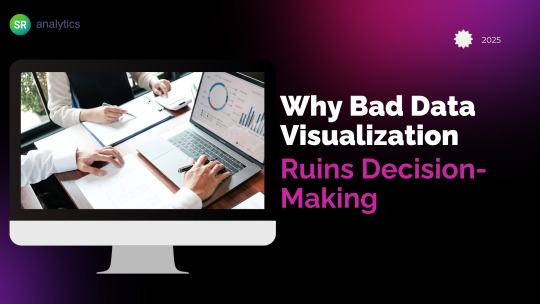
“There’s a greatest value beneath right data visualization that boons decision-making and allows us to notice the unexpected.” However, insufficient data visualization and misleading graphics can default decision-making.
In today’s data-driven world, visualization plays a crucial role in communicating complex information in an easy-to-understand manner, guiding business decisions, and driving strategic initiatives. However, when data visualization is done poorly, it can lead to misinterpretation, confusion, and, ultimately, disastrous decision-making. In this article, we’ll explore the impact of bad data visualization on decision-making, provide examples of good and bad data visualization, and offer best practices for creating compelling and informative visualizations.
The Perils of Bad Data Visualization
Bad data visualization can have severe consequences, such as
1. Misleading interpretations: Improperly designed charts and graphs can distort the authentic relationships within data, causing viewers to misunderstand key trends and patterns. It will further add to potential financial losses.
2. Wasted resources: Bad data visualization can lead to misallocated resources, as decisions are based on inaccurate or misleading information.
3. Loss of Trust: Consistently presenting misleading or inaccurate visualizations can erode stakeholder trust, damaging relationships and reputations.
4. Missed opportunities: Poor data visualization can obscure significant trends, patterns, and insights, leading to missed opportunities and potential revenue losses.
5. Poor decision-making: When based on inaccurate visualizations, crucial decisions in business, policy, or research can be flawed and lead to adverse outcomes.
6. Ethical concerns: Deliberately manipulating visuals to support a specific agenda can be considered unethical and potentially have legal implications.
Examples of Bad Data Visualization
Here are a few examples of bad data visualization:
1. 3D charts and graphs: 3D visualizations can add unnecessary complexity and obscure the data.
2. Misleading scales: Using scales that distort the data, making it difficult to interpret the information accurately.
3. Cluttered and busy designs: Creating overly complex, cluttered visualizations, that and challenging to read.
4. Lack of context: Failing to provide the proper context makes understanding the data and its implications challenging.
5. Misleading color schemes: Using color poorly, such as not considering color blindness or using too many colors, can confuse interpretation.
6. Overcrowding information: Presenting too much data on a single visualization makes it challenging to read and understand.
Examples of Good Data Visualization. In contrast, good data visualization should:
1. communicate insights: Effective visualizations should communicate insights and trends in the data.
2. Use appropriate visualization types: Choose the most appropriate visualization type for the data, such as bar charts, line graphs, or scatter plots.
3. Provide context: Offer sufficient context, including labels, titles, and descriptions, to help stakeholders understand the data and its implications.
4. Be aesthetically pleasing: Use colors, fonts, and layouts that are visually appealing and easy to read.
5. Appropriate chart type choice: Choosing the right chart type enables an adequate representation of the data and allows straightforward interpretation.
Best Practices for Effective Data Visualization
To avoid the pitfalls of bad data visualization, follow these best practices:
1. Keep it simple: Avoid clutter and complexity, opting for clear, concise visualizations that communicate the data effectively.
2. Use consistent colors and scales: Ensure they are consistent throughout the visualization, making it easy to interpret the data.
3. Provide context: Offer sufficient context, including labels, titles, and descriptions, to help stakeholders understand the data and its implications.
4. Test and refine: Test the visualization with stakeholders and refine it based on feedback to ensure it effectively communicates the insights and trends in the data.
Tools for Effective Data Visualization
There are many tools available for creating compelling data visualizations, including:
1. Tableau: A popular data visualization platform offering various visualization types and customization options.
2. Power BI: A data analytics service by Microsoft that provides interactive visualizations and business intelligence capabilities.
3. D3.js: A JavaScript library for producing dynamic, interactive data visualizations in web browsers.
4. Matplotlib: A popular Python library for creating static, animated, and interactive visualizations.
Conclusion
Bad data visualization can have severe consequences, including misleading insights, wasted resources, and loss of trust. By following best practices, using appropriate visualization types, and providing context, you can create compelling and informative visualizations that support data-driven decision-making. Remember, data visualization aims to communicate complex information clearly and concisely, enabling stakeholders to make informed decisions and drive business success.
#Data analytics consulting#data analytics consulting services#data and analytics consulting#data analytics consultant#business intelligence services#business intelligence consulting#power bi consultant#data and analytics consultant#data analytics consulting company#data and analytics consulting#data analytics consultant#data analytics services#analytics consulting
0 notes
Text
SQL & Power BI Certification | MITSDE
Enhance your career with MITSDE’s Online Power BI Certification Course! This comprehensive program equips you with essential skills in data visualization, analytics, and business intelligence, helping you make data-driven decisions. Learn to create interactive dashboards, generate insightful reports, and analyze business trends effectively. Designed for professionals and beginners alike, this course offers hands-on training and expert guidance to boost your expertise. Stay ahead in the competitive job market—enroll today and transform your data analysis skills with Power BI!
#SQL & Power BI Certification Program#Power BI Certification#powerbi course#MITSDE#Data management#Data visualization#Data Specialist#Data manipulation#Data analytics#Business intelligence#Power BI Course
0 notes
Text

JUST PLACED AT PALLADIUM.
#data science#data analytics#business analytics#advance excel#power bi#tableau#sql#python#machine learning#ai technology
1 note
·
View note
Text
How Business Analytics Certifications Enhance Problem-Solving Skills
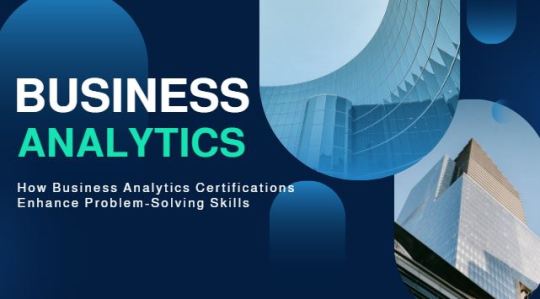
Business analytics certifications equip professionals with essential problem-solving skills by combining theoretical knowledge and practical experience. These programs cover key areas like data visualization, statistical analysis, and predictive modeling while offering hands-on projects and training in advanced tools like Python, Tableau, and Power BI.Guided by industry experts, certifications such as a PGCM in Business Analytics not only enhance analytical abilities but also boost career prospects, preparing individuals for roles like Business Analyst or Data Scientist. With these credentials, you can tackle complex challenges, deliver impactful solutions, and drive organizational success in a data-driven world.Read More
0 notes
Text
design interactive power bi dashboards for your business
0 notes
Text
Unlock the Power of Data with My Free Power BI & Microsoft Fabric Pricing Estimator! 🚀
Starting your journey with Power BI or Microsoft Fabric can feel overwhelming, especially if you're new to these powerful tools. From mastering the features to navigating configurations, determining the right licenses and understanding potential costs can add to the confusion. That's why I'm excited to introduce our brand-new, free-to-use Power BI & Microsoft Fabric Pricing Estimator! At Easy Insight, I helped create this tool to simplify your licensing decisions, demystifying the complexities so you can focus on what truly matters—leveraging your data effectively.
The Complexity of Power BI & Microsoft Fabric Pricing
Let’s face it—Microsoft Power BI is incredible for data visualization and business intelligence, and Microsoft Fabric takes it even further with advanced analytics. However, all these fantastic features come with a complex pricing structure. Here’s why it can be so tricky:
Multiple Subscription Plans: With options like Power BI Pro, Power BI Premium per User, and now Microsoft Fabric replacing Power BI Premium Capacity (distinct from Premium per User), each comes with its own pricing model.
Different User Types and Licensing: Not every team member needs the same license, adding another layer of complexity.
Data Volume and Features: Whether you need Co-Pilot, Data Lakehouse, more storage, or frequent data refreshes (up to 48 times a day), these factors significantly impact your licensing needs.
Regional Pricing: Costs can vary based on your business location, complicating things for global teams.
All these elements make it challenging to get a clear picture of your expected expenses, especially when planning for growth or working within a tight budget.
Introducing My New Power BI & Microsoft Fabric Pricing Estimator
To tackle these challenges, I developed the Power BI & Microsoft Fabric Pricing Estimator. This tool offers a transparent and personalized cost estimate, guiding you step-by-step through a few simple questions to understand your business needs better. Whether you’re a small business starting with Power BI or a large enterprise exploring Microsoft Fabric’s advanced features, our estimator adapts to your specific requirements, ensuring you know exactly where your money is going.
See how the Power BI/Microsoft Fabric Cost Calculator can help you find the best pricing and license options for your business.
How the Pricing Estimator Works
Using our Pricing Estimator is incredibly simple and only takes a few clicks. Here’s how it works:
Enter Your Organisation’s Details:
Number of Users: Specify how many people need access and the type of licenses they require (e.g., Power BI Pro, Premium).
Data Usage: Estimate your data consumption to ensure you have the right storage and processing capabilities.
Licensing Preferences: Choose between different licensing options like Pay-As-You-Go or committing to a 12-month plan.
Regional Preferences: Select your operating region (e.g., UK or US) to account for any regional pricing differences.
Generate Your Estimate:
Once you provide your details, the estimator crunches the numbers and delivers a detailed breakdown of your expected monthly and yearly costs.
Review and Adjust:
Examine your estimate and tweak the inputs to explore different scenarios or optimize your budget further.
It’s that simple! Answer a few questions, and I’ll provide you with our licensing recommendations and associated costs.
Current Coverage & Future Expansions
Currently, our Pricing Estimator covers US and UK pricing. I'm continuously working to expand our tool to include more regions, and I need your help! Let me know in the comments which regions you'd like us to add next. Your feedback is invaluable in ensuring our tool meets the needs of businesses like yours around the globe. Together, we can make the Pricing Estimator even more comprehensive and useful for everyone.
Get Started Today: Try the Pricing Estimator
Don’t let licensing complexities hold your organization back from harnessing the full potential of Power BI and Microsoft Fabric. Our Power BI & Microsoft Fabric Pricing Estimator is here to help you make strategic, informed decisions that align with your business intelligence needs. Here’s how to get started:
Visit Our Pricing Estimator Page: Access the tool here.
Enter Your Details: Provide necessary information about your organization’s users, data usage, licensing preferences, and region.
Review Your Estimate: Receive a detailed cost breakdown and explore different licensing scenarios to find the best fit for your budget.
Take Action: Use the information to kickstart your Power BI/Fabric journey, or reach out to our team for further assistance.
Empower Your Business Intelligence Journey
I hope our Power BI & Microsoft Fabric Pricing Estimator equips you with the tools and knowledge needed to make informed, cost-effective licensing decisions. By simplifying the complexities of licensing and pricing, I aim to empower more businesses to take their first step with these invaluable BI tools.
Ready to take the next step? Try our Pricing Estimator today, and remember, if you need personalized support or guidance, the Easy Insight team is here to help!
Frequently Asked Questions (FAQ)
Do I need to sign up for a newsletter or marketing updates to use the Pricing Estimator?
Nope! You can use our Power BI & Microsoft Fabric Pricing Estimator without signing up for any newsletters or marketing communications. However, if you’re interested in staying updated with the latest tips, updates, and exclusive offers from Easy Insight, you’re always welcome to subscribe!
Will you keep or store my data after I use the estimator?
Your privacy is important to us. We do not store any of the data you input into the Pricing Estimator. Once you receive your estimate, all the information you provided is securely deleted from our servers.
Is the Pricing Estimator free to use?
Yes, absolutely! Our Pricing Estimator is completely free to use with no hidden fees or charges—just straightforward, accurate cost estimates tailored to your needs.
Can I get support if I have questions while using the estimator?
Of course! If you have any issues or questions while using the Pricing Estimator, feel free to reach out to our team at Easy Insight. We’re here to help you every step of the way.
When will you add pricing for regions outside the US and UK?
I’m actively working on expanding our Pricing Estimator to include more regions. Let me know in the comments which regions you'd like us to add next, and I’ll prioritize them in future updates.
How often is the pricing information updated in the estimator?
I regularly review and update our Pricing Estimator to ensure accuracy, reflecting any changes in subscription plans, regional pricing, or feature add-ons. You can trust that the estimates you receive are based on the most current data available.
What if my licensing needs change after I use the estimator?
Licensing needs can evolve as your business grows or changes. Simply revisit the tool and update your inputs to get a new estimate. Additionally, our team at Easy Insight is always here to help you reassess and optimize your licensing as needed.
1 note
·
View note
Text
Microsoft Power BI is a sophisticated business analytics tool that uses interactive visuals and strong intelligence features to transform unprocessed data into insights that can be used.
0 notes
Text
The Future of Full Stack Java Development
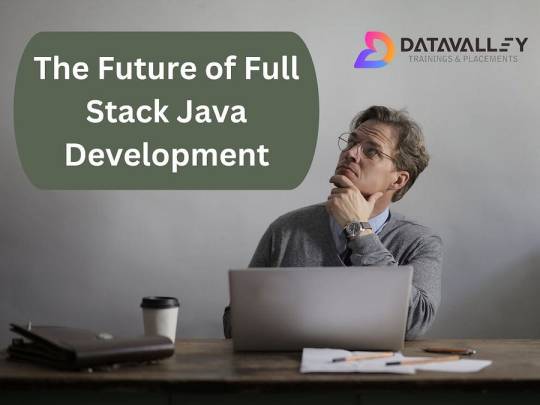
Full-stack developers, also known as “jack of all trades,” are in high demand in India. They are capable of carrying out the duties of numerous professionals. They earn good money and have many job opportunities with rewarding experiences because of their diverse skills. Full-stack Java programming has a bright future because its popularity is growing and will continue to grow in the coming years.
It’s well known that full-stack developers are proficient in both server-side and client-side programming. They are the professionals who carry out the responsibilities of backend and frontend developers. Despite not always being regarded as specialists, their abilities enable them to handle development tasks with ease. All firms look forward to having a brilliant full-stack developer as a future developer for a number of reasons. They handle a variety of technologies, which enables them to manage more project facets than the typical coder.
An experienced web developer who primarily works with Java programming is known as a Java full-stack developer. The front end, back end, and database layer are the three levels of code that these web developers build. The web development teams are frequently led by full-stack Java engineers, who also assist in updating and designing new websites. Because there is a great demand for Java full-stack developers. Many institutions have seized the opportunity by providing well-thought-out Java full-stack developer courses. You may study full-stack development quickly and become an expert in the area with the aid of these courses.
Java Full Stack Development by Datavalley
100% Placement Assistance
Duration: 3 Months (500+ hours)
Mode: Online/Offline
Let’s look into the future opportunities for full-stack Java professionals in India.
4 things that will Expand the Future Purpose of Java Full-Stack Developers
The Role of a Full-Stack Developer
Full-stack developers work on numerous tasks at once. They need to be extremely talented and knowledgeable in both front-end and back-end programming languages for this. JavaScript, CSS, HTML, and other frontend programming languages are essential. When creating new websites or modifying old ones, Java is a key programming language used by Java full-stack developers. However, backend programming languages consist of .Net, PHP, and Python depending on the projects. The full stack developers are distinguished from other developers by their proficiency and understanding of programming languages. With the availability of the finest Java full stack developer training, students may now easily master a frontend programming language like Java. The full-stack developer is more valuable and in demand when they are knowledgeable in multiple programming languages.
Responsibilities of a Full-Stack Developer
Functional databases are developed by full-stack developers. It creates aesthetically pleasing frontend designs that improve user experience and support the backend. The entire web-to-web architecture is under the control of these full-stack developers. They are also in charge of consistently maintaining and updating the software as needed. The full-stack developers bear the responsibility of overseeing a software project from its inception to its finalized product.
In the end, these full-stack developers also satisfy client and technical needs. Therefore, having a single, adaptable person do many tasks puts them in high demand and increases their potential for success in the technology field. Through extensively developed modules that expand their future scope, the Java full-stack developer course equips students with the skills necessary to take on these tasks.
The full-stack developer salary range
Full-stack developers are among the highest-paid workers in the software industry. In India, the average salary for a full-stack developer is 9.5 lakhs per annum. The elements that determine income typically include experience, location of the position, company strength, and other considerations. A highly skilled and adaptable full-stack developer makes between 16 and 20 lakhs per annum. Full-stack engineers get paid a lot because of their extensive skills, they can handle the tasks of two or three other developers at once.
By fostering the growth of small teams, preventing misunderstandings, and cutting the brand’s operating expenses, these full-stack developers perform remarkable work. Students who take the Java full-stack developer course are better equipped to become versatile full-stack developers, which will increase their demand currently as well as in the future in the industry.
Job Opportunities of Java Full Stack Developers
The full-stack developers are knowledgeable professionals with a wide range of technological skills. These competent workers are conversant with numerous stacks, including MEAN and LAMP, and are capable of handling more tasks than a typical developer. They are skilled experts with a wealth of opportunities due to their extensive understanding of several programming languages.
Full-stack developers are in high demand because they can work on a variety of projects and meet the needs of many companies. The full-stack Java developer course helps students build this adaptability so they can eventually become the first choice for brands searching for high-end developers.
As a result, these are a few key factors improving the future prospects of Java Full Stack developers in India. They are vibrant professionals who are in high demand due to their diverse skill set and experience, and they are growing steadily. The Java full stack developer course can help students hone their knowledge and abilities to succeed in this industry.
Datavalley’s Full Stack Java Developer course can help you start a promising career in full stack development. Enroll today to gain the expertise and knowledge you need to succeed.
Attend Free Bootcamps
Looking to supercharge your Java skills and become a full-stack Java developer? Look no further than Datavalley’s Java Full Stack Developer bootcamp. This is your chance to take your career to the next level by enhancing your expertise.
Key points about Bootcamps:
It is completely free, and there is no obligation to complete the entire course.
20 hours total, two hours daily for two weeks.
Gain hands-on experience with tools and projects.
Explore and decide if the field or career is right for you.
Complete a mini-project.
Earn a certificate to show on your profile.
No commitment is required after bootcamp.
Take another bootcamp if you are unsure about your track.

#dataexperts#datavalley#data engineering#data analytics#dataexcellence#business intelligence#data science#power bi#data analytics course#data science course#java developers#java full stack bootcamp#java full stack training#java full stack course#java full stack developer
2 notes
·
View notes
Text
My Journey in Learning Power BI: Crafting Visually Appealing Dashboards for My Services and Clients
Introduction As an IT consultant at Valantic Hamburg, I focus primarily on developing Chatbots using platforms like Cognigy, IBM Watson Assistant, and Discovery. Throughout my experience, I have recognized the importance of effectively communicating the usage data of my clients’ customers who interact with these Chatbots. This realization led me to explore Microsoft Power BI, a tool that allows…
#Business Intelligence#Chatbots#Cognigy#Dashboard Design#Data Analysis#Data Analytics#Data Visualization#IBM Watson Assistant#IT Consulting#Microsoft Power BI#PL-300 Exam#Power BI
0 notes